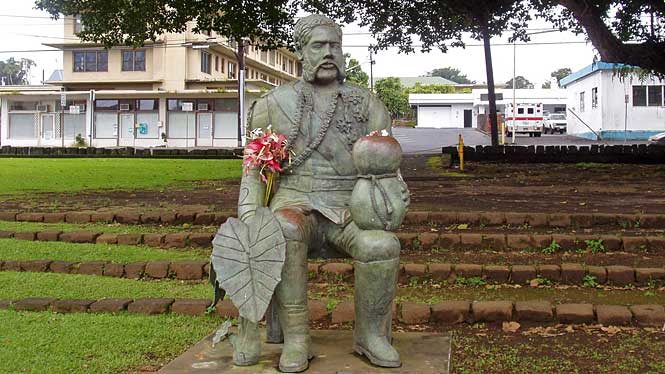In his 54 years of life, King David Kalakaua certainly lived up to his nickname, “The Merrie Monarch.” He had a passion for music, dancing, parties, and the finest food and drinks. The king’s reign, however, was also marked by tragedy, pain and dark clouds hovering over the Hawaiian kingdom.

Kalakaua was born on November 16, 1836, in Honolulu. His parents were the high chief Kahana Kapaakea and the high chiefess Analea Keohokalole. Per Hawaiian custom, the infant was adopted by the chiefess Haaheo Kaniu, who took him to the court of King Kamehameha III on the island of Maui. When Kalakaua was four, he returned to Oahu to begin his education at the Royal School.
Fluent in English and Hawaiian, Kalakaua took to studying law at the age of 16. His various government positions, however, prevented him from fully completing his legal training. Instead, by 1856, the young Hawaiian was a major on the staff of King Kamehameha IV. He had also been a leader of a political organization known as the Young Hawaiians; the group’s motto was “Hawaii for the Hawaiians.” In addition to his military duties, Kalakaua served in the Department of the Interior and, in 1863, was appointed postmaster general.
When Kamehameha V died in December 1872 without having designated an heir, an election was held to determine his successor. Prince William Charles Lunalilo emerged victorious over Kalakaua by a wide margin. On February 3, 1874, however, Lunalilo also died without naming a successor. Another election was held, and Kalakaua won handily over Queen Emma, widow of Kamehameha IV.
Supporters of the queen rioted. Kalakaua requested help from American and British warships in the harbor, and the uprising was quelled. Because of the ill feelings, however, the new king’s plans for a lavish celebration were put on hold and his reign began on a modest note.
In late 1874, Kalakaua sailed to the United States amid much fanfare. In Washington, he negotiated the Reciprocity Treaty of 1875, which eliminated the tariff on sugar and other Hawaiian products. As a result, Hawaii’s sugar industry boomed and the kingdom enjoyed a period of economic prosperity.
Upon his return, Kalakaua moved into his palace with his wife, Queen Kapiolani, the granddaughter of King Kaumualii of Kauai. He decided he needed a more luxurious home, however, and had Iolani Palace built at a cost of $350,000—an unheard-of sum at the time.
The Hawaiian culture enjoyed a revival of sorts under Kalakaua, including hula and chants. In July 1887, however, an organization called the Hawaiian League forcibly took control of the government and presented the king with a new constitution. Called the “Bayonet Constitution” (for obvious reasons), Kalakaua had little choice but to sign it. The new constitution severely restricted his powers and signaled the end of the monarchy.
In November 1890, an ill Kalakaua sailed to California for medical treatment. He died at a hotel in San Francisco on January 20, 1891. His final words were, “Tell my people I tried.”